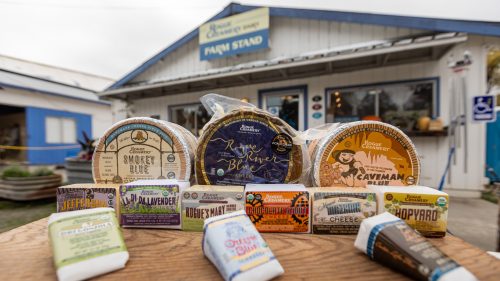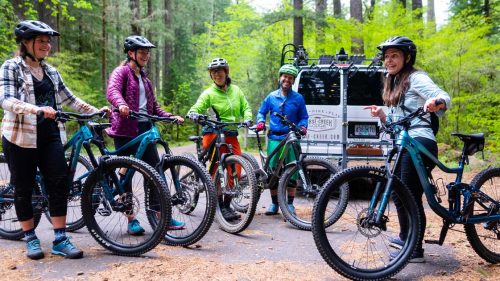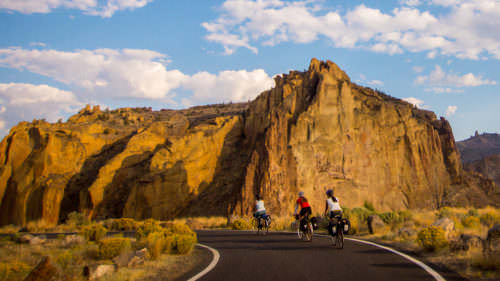Editor’s note: Never before have we so deeply experienced the effects of a changing planet. This four-part series dives into the effects of climate change on some of Oregon’s destinations, attractions and industries. We also explore the resilience of local communities and the innovations of local leaders determined to keep Oregon one of the greenest places in the world to visit and live.
Part 1: Land | Part 2: Wildfire | Part 3: Water | Part 4: Air
Whether you live in Oregon or elsewhere on the planet, we’ve all been experiencing more extreme weather: hotter, drier summers; heat waves; more devastating fire seasons; walloping storms. In 2021 the state withered under a “heat dome”; in 2022 12 Oregon cities experienced record-breaking average summer temperatures. Several regions in the state are still suffering under a years-long drought, and though a welcome wet winter has brought some relief, Oregon’s rain levels and snowfall patterns have generally become more severe and erratic.
In the face of this reality, Oregon communities that depend on industries like farming, ranching, fishing, tourism and outdoor recreation have been adjusting the ways in which they work and play. All across Oregon — from state government to the smallest towns, from family-owned hotels to multigeneration ranches — people are taking action to reduce their contributions to climate change.
Without mindful action to reduce activities that create greenhouse gases — especially the burning of fossil fuels used in transportation — carbon dioxide continues to be released into the atmosphere at an alarming rate. Once there, those molecules trap heat, raising global temperatures and shifting weather patterns. Experts agree we need to seriously curb our carbon emissions if we’re going to slow the warming trend.
We are all part of the solution, and we can take actions large and small by minimizing our carbon footprint, supporting the businesses and industries that make each of Oregon’s distinctive regions so special, and exploring regenerative-travel tours and projects.
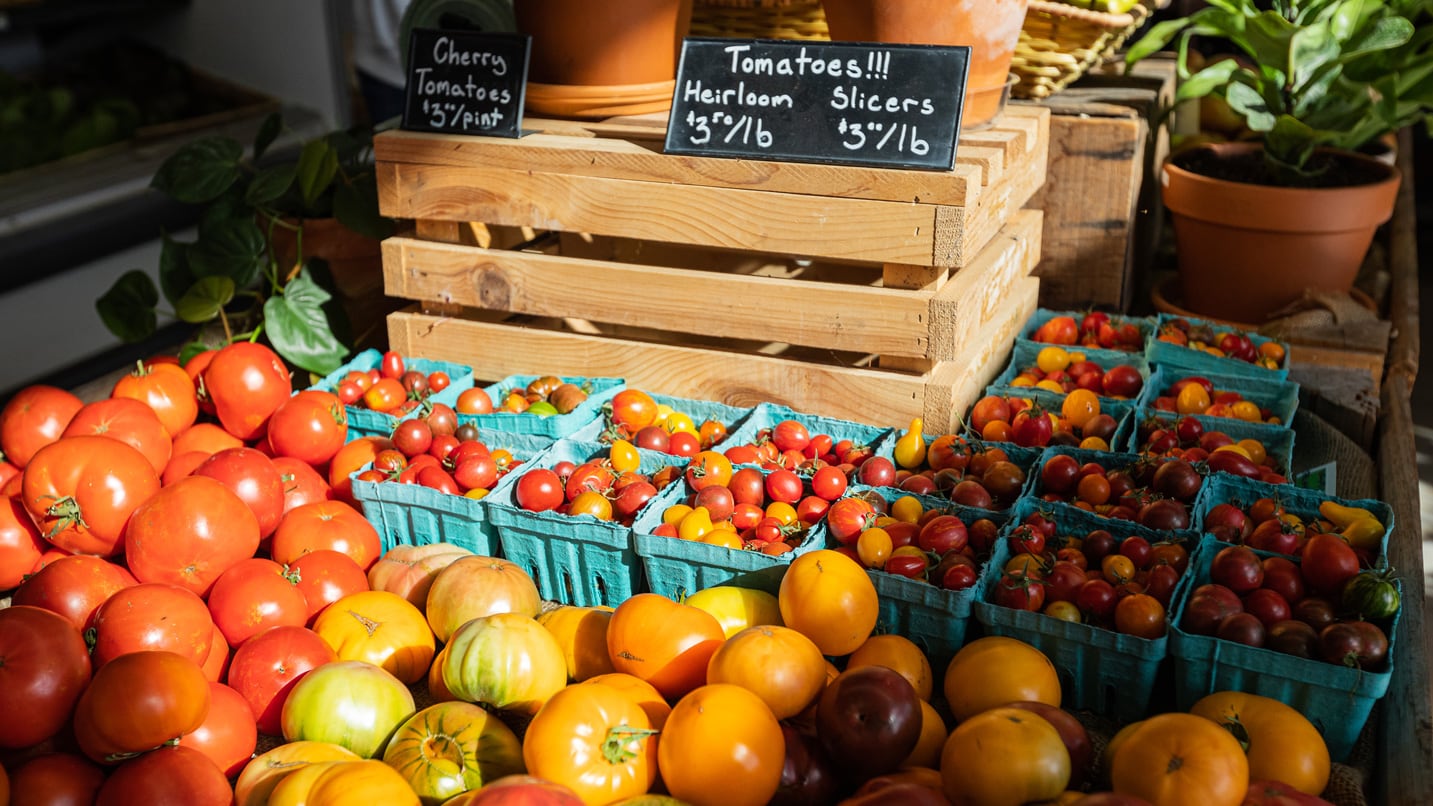
Eat (and Sip) Local
One of the easiest ways to be a good steward in Oregon is to support local businesses, especially when it comes to food and drink. Food waste is a huge problem in Oregon and elsewhere, as organic matter doesn’t decompose as quickly in a landfill as you might think, emitting methane, a potent greenhouse gas. Here’s a startling fact: The purchase of food in Oregon is the second-leading contributor (at 15%) to our state’s consumption-based greenhouse-gas emissions, second only to our use of vehicles.
Many statewide organizations are doing innovative work every day to systematically reduce food waste and even get much of that food to those who need it. For instance, since 2004 the nonprofit Farmers Ending Hunger has partnered with local family farmers, growers and ranchers across Oregon to help them donate a portion of the food they grow. The organization helps them harvest and process the crops into food that is easily stored and distributed to emergency food networks in the region — from wheat to pancake mix — bridging the urban and rural divide.
Oregon’s governor has committed the state to reducing food waste by 50% by 2030. While you travel throughout the state, look for places that feature locally grown ingredients; shop for produce from local farm stands, U-picks and farmers markets; and support the independent businesses along one of the many self-guided Oregon Food Trails.
“The good news is that there are straightforward solutions, big and small, to reduce food waste, and these solutions can save households and businesses money,” says Udara Abeysekera Bickett, program manager at the Rethink Waste Project in Bend. To help be part of the solution wherever you call home, Abeysekera Bickett suggests taking a free four-week Rethink Food Waste Challenge, designed to help you find out what — and how much — food is going to waste in your home.
Earth Week and all year-round is an excellent time to support Oregon’s eco-friendly wineries – those that are doing the work to leave the planet better through their sustainable practices. For instance, Soter Vineyards– an esteemed biodynamic vineyard in Carlton – has since 2009 donated $1 from each bottle of their Planet Oregon pinot noir to the Oregon Environmental Council to support the nonprofit’s work towards climate resilience as they collaborate with with legislators, elected officials, business owners and farmers throughout the state.
Emissions-Free Electric Car Routes
Going electric is easy on the West Coast with the West Coast Electric Highway — an extensive network of EV-charging stations from British Columbia, Canada, to California. The highway runs through Oregon, and you can find “fast” charging stations every 25 to 50 miles along Interstate 5 and other major roadways. A new Tesla “supercharger” station has come online in Sutherlin, as well. The Oregon Department of Transportation has developed a five-year plan for populating the state with charging infrastructure, starting with new charging stations on I-5, U.S. Route 97 and Interstate 205; new stations on the Coast along Highway 101 will follow. PlugShare provides real-time information and rates each station with a “PlugScore” reflecting users’ experience. Visitors can find several curated EV-friendly routes in the Oregon Electric Byways map and guide.

Car-Free Travel in Oregon
Interested in ditching the car altogether? Consider these car-free itineraries from across the state, which use a combination of bicycles, light rail, shuttle buses and Amtrak train service.
Portland is a famously pedestrian-friendly city, with a comprehensive light rail and bus service and generous bike lanes. You can rent a bright-orange electric bike at one of over 180 BIKETOWN stations. Adaptive BIKETOWN even provides special bikes and fittings for any particular physical needs. Bend, Eugene and Ashland also offer bike-sharing services.
The Columbia River Gorge Waterfall Corridor, which boasts the greatest concentration of waterfalls in North America, sees road congestion all year round, but especially in the summer. More than ever, you’ll want to plan ahead for summer visits to Multnomah Falls and nearby cascades. Between May 26 and Sept. 4, 2023, timed-use tickets for motorized vehicles will be required at Multnomah Falls. However, for a smarter way to travel, skip the car (and parking hassle) and book a shuttle from a company like Sasquatch Shuttle or a relaxing bus ride with an outfitter like Columbia Gorge Express. Or try exploring on two wheels — bring your own or rent an e-bike from E-Bike Multnomah Falls to bypass crowded parking lots and access several falls on a peaceful day trip.
If you’d like to take a bike-centric vacation anywhere in the state, Cycle Oregon is the place for route planning. From forested routes to gravel rides, it’s easy to trace out the perfect itinerary. For bike trips that marry gorgeous scenery with historic sites, check out its first Connections route through Wallowa County. Or choose from one of 17 state-designated Scenic Bikeways, such as the Willamette Valley Scenic Bikeway, which links Champoeg State Heritage Area and Eugene along 134 lush miles.
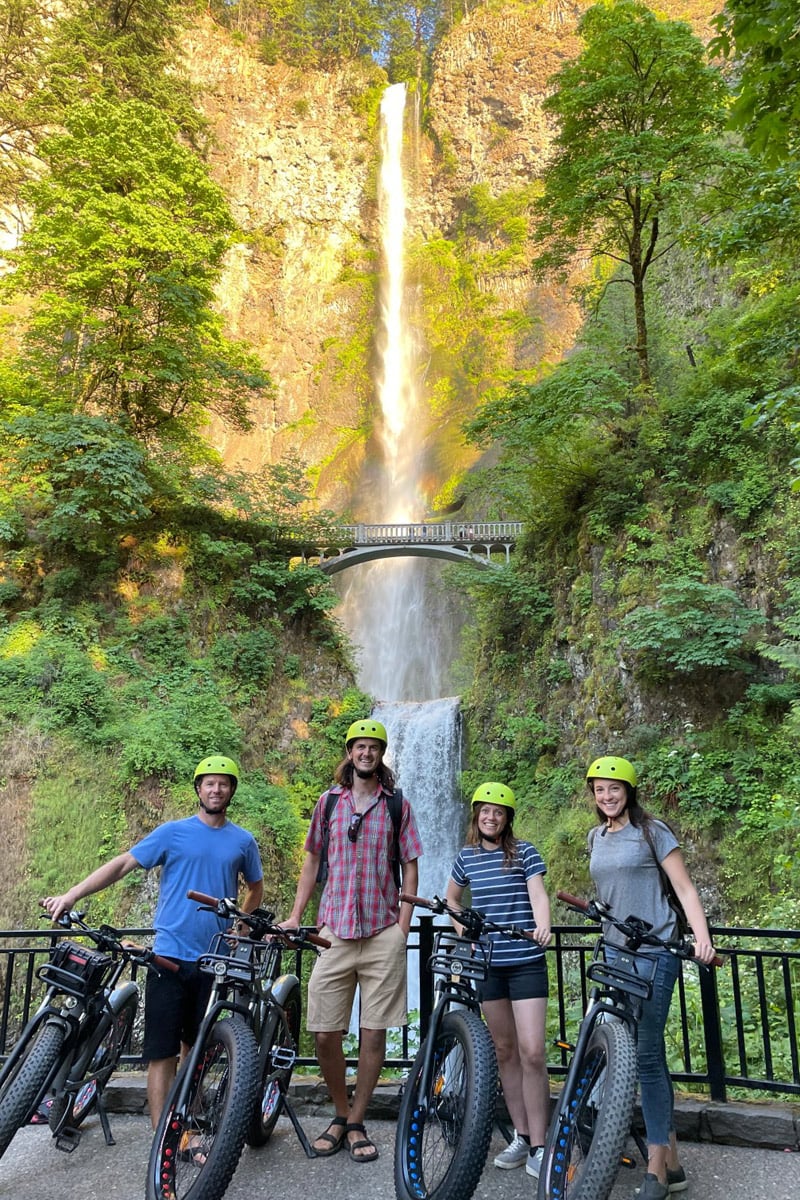
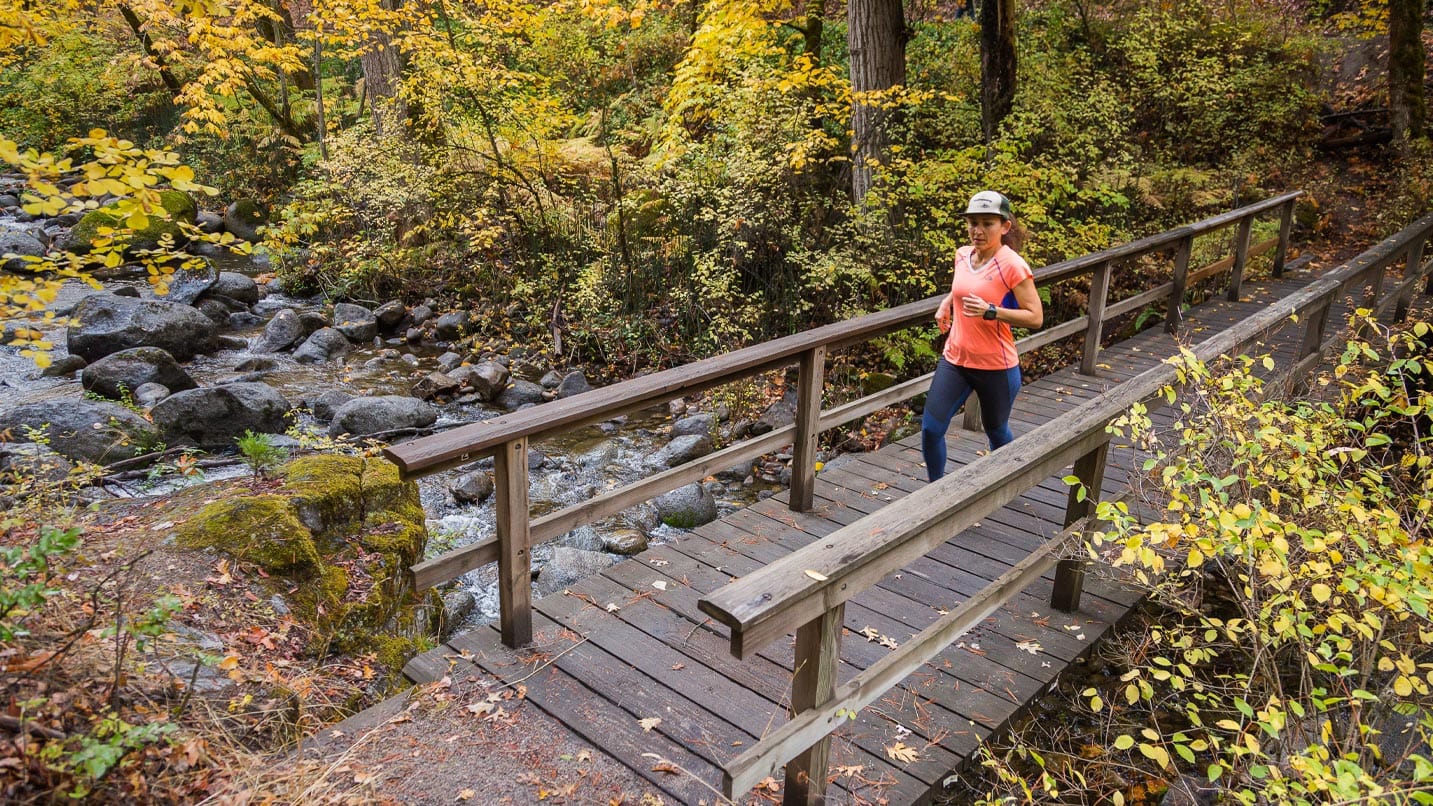
Take Advantage of the Non-Summer Months
Another way to lessen your travel impact is traveling in the off- or shoulder season, when resources in small and busy seasonal communities are not so stretched. Lodgings and restaurants across the state have struggled to retain staff and provide the quality service we’ve come to expect. At the same time, some towns are seeing visitor-related numbers drop during what used to be their busiest times in response to changing conditions.
“We’re going to see it change even more,” says Sandra Slattery, executive director at the Ashland Chamber of Commerce, noting that smoky summers have become the norm, not the exception. Ashland is not only home to the world-renowned Oregon Shakespeare Festival, which was severely impacted by recent wildfires and may have to cut its 2023 season short due to budget shortfalls. The town is also famous for its rich culinary and outdoor-recreation scenes. Especially magical are fall and spring for less-crowded mountain biking trails and water adventures in Southern Oregon, and winter skiing at Mt. Ashland is always worth the trip.
If you tend to travel in summer, consider visiting some of your favorite spots in other seasons: Try winter storm-watching from comfy lodging in Astoria or Yachats, for example. Snowshoeing in the Wallowa Mountains with a stay at Wallowa Lake Lodge — which celebrates its centennial in 2023 — is a glorious way to experience the snowy peaks.
You can also show your support by patronizing eco-friendly hotels and inns. The Oxford Hotel in Bend, for example, runs on 100% renewable energy; operates a robust recycling program; and works with local vendors for organic, refillable products like shampoo and soap to reduce single-use waste. You may find you sleep better on the hotel’s natural mattresses, made from rubber-tree latex and soy foam.
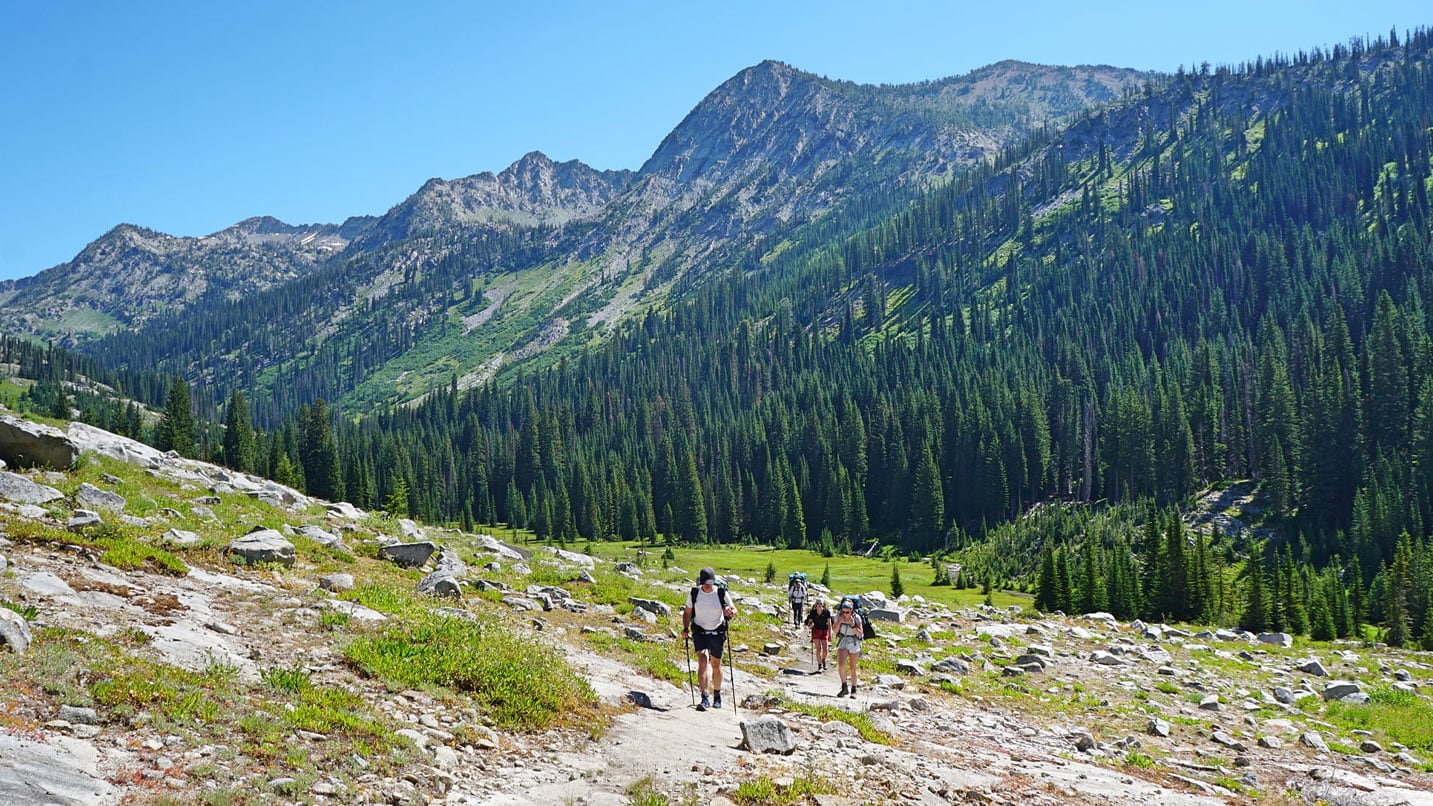
Go Deeper With Guides
Finally, consider taking guided tours with local experts. Carpooling can lessen your impact on the environment, but taking the opportunity to see Oregon from the perspective of an experienced guide with a rich relationship to the community and land can deepen your understanding of a region. Go whale-watching on the Coast or tour the Warm Springs Indian Reservation with EcoTours of Oregon. Or grab a headlamp and join the experienced guides of Wanderlust Tours, who’ll lead you into the depths of lava-tube caves near Bend to learn about the fragile, wondrous ecosystems.
In the mountains of Northeast Oregon, Go Wild American Adventures offers multiday wilderness experiences. Founder Dan Sizer especially enjoys encouraging beginners who have never strapped on a backpack to head off into the wild, and he’s landed on a winning formula: Make trips comfortable and fun, and cap off adventurous days with gourmet dinners and cocktails. Go Wild is now offering paddling adventures in the rugged, ochre-toned Owyhee Canyonlands, which include educational and stewardship components.
“Seeing the change in people as they step out of the car and see a starry sky is what urged me to start my business,” says Sizer. “If people have a great time in the wilderness, they’re more likely to do it again. Once they appreciate and understand the outdoors, they ultimately become better caretakers.”
Once you caretake even the smallest bit of Oregon, you become a collaborator and an agent of change, helping the state thrive even in the face of monumental challenges.
Part 1: Land | Part 2: Wildfire | Part 3: Water | Part 4: Air
